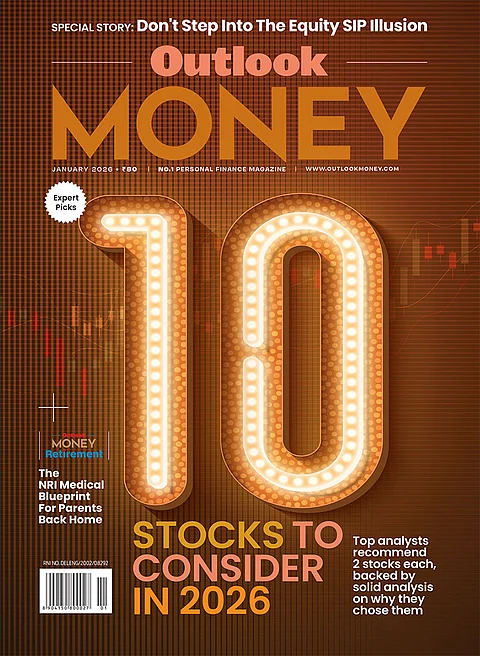In the May 2023 issue (http://bit.ly/3CHOl1y), we discussed some hybrid fund options that can replace debt in view of the changes in the taxation rules. We will now discuss arbitrage funds from the same point of view. They too come under the category of hybrid funds. Their taxation is similar to that of equity funds but they are less volatile than them. Let us look into the working of this category of mutual funds.
Arbitrage funds earn returns from the price differential between equity stocks in the cash market and stock futures market, for 65 per cent of the portfolio. The price at which a stock is sold in the stock futures market is higher than the price at which it is purchased in the cash or spot market. In the stock futures market, futures of multiple maturities are available. Usually, fund managers sell near-month contracts and not longer-maturity contracts. There is higher liquidity and better visibility in near-month contracts, such as potential corporate action from the underlying company.
The price difference between cash and futures represents the ‘cost of funds’ for the remaining days between the date of the transaction and the expiry of the futures contract—the last working Thursday of the month. The concept of ‘cost of funds’ is that a trader or investor is deferring a transaction from the current date to the last Thursday of the month or till the expiry of the contract if Thursday is a holiday. For this deferment, other traders step in and conceptually ‘fund’ it. When a trader in the market purchases a stock in the stock futures market, the arbitrage fund manager sells the stock at a price higher than the cash market, and this price differential represents the ‘cost of fund’.
From a technical point of view, arbitrage funds have 65 per cent or more of the portfolio in cash-futures arbitrage and 35 per cent or less in debt or money-market instruments. However, from a practical perspective, these funds may be akin to fixed-income funds, as there is no directional call on equities. Returns do not come from the equity market moving up but from the price differential between the two market segments. Every ‘buy’ position in an equity stock is offset with a ‘sale’ position in the futures of the same stock.
Let us look at an illustration. On the last working Thursday of a month, when the earlier futures contracts expire, the fund manager reconstructs the portfolio. Let’s say the price of a stock in the cash or spot market is Rs 100, and Rs 100.50 in the stock futures market. The fund manager purchases the share in the cash market for Rs 100 and sells it in the futures market for Rs Rs 100.50, earning 50 paise in the process. This is for one month, but the earning would be 6 per cent if we annualise it.
As mentioned earlier, the returns of arbitrage funds do not depend upon the equity stock prices moving up, like in conventional equity funds. The basis of earning in arbitrage funds is that on expiry day, the futures contract will expire and will not have any value. Let us say the last Thursday of the next month or the expiry day is a holiday, the spot- and futures-segment prices converge to Rs 100.25. In the cash segment, the stock was purchased earlier for Rs 100. That gives a profit of 25 paise on that leg. In the futures segment, it was sold earlier at Rs 100.5 and is now squared off or purchased at Rs 100.25, leading to a profit of 25 paise. Together, there is a profit of 50 paise per Rs 100 in one month or 6 per cent annualised.
Apart from the portfolio’s 65 per cent component described above, the balance of 35 per cent can be in debt, money market instruments, or cash equivalent. Usually, fund managers keep the 35 per cent component in relatively lower maturity devices to keep volatility low.
Returns from arbitrage funds may be volatile but are stable enough over an adequate holding period to be compared with fixed-income funds. It is important to understand the source of the volatility in the arbitrage component. The spread or differential between the cash and futures can vary. Even when the spread is low, the fund manager has to execute arbitrage for 65 per cent of the portfolio, as that is the mandate.
Over an adequate holding period, the cash futures spread improves across market cycles, and you carry home decent returns. That is why you need a sufficient holding period for arbitrage funds. In March 2020, due to certain typical market conditions, the cash futures spread dropped significantly and was even negative for a few days. In June 2020, this adverse phenomenon was repeated. A section of investors would have thought there was something wrong with the concept of arbitrage itself. And that precisely is the point we are making: fluctuations will happen; come to arbitrage funds with an adequate horizon, and things will smoothen out. Ideally, the holding period should be one year. That takes care of the market fluctuations in the interim.
In the growth option of arbitrage funds, over a holding period of more than one year, the returns are taxable as long-term capital gains at 10 per cent plus surcharge and cess. For a holding period of less than one year, the returns from the growth option of the fund are taxable as short-term capital gains, at 15 per cent plus surcharge and cess. In debt funds, returns are taxable at your marginal slab rate, both in the growth and income distribution-cum-capital withdrawal or IDCW (dividend) option. For most investors, the marginal slab rate would be 30 per cent plus surcharge and cess. Hence, over a one-year holding period, you get a significant tax advantage in arbitrage funds, over both a short-term holding period and IDCW (dividend) option. If not one year, then the horizon should be, say, at least six months, to take care of the volatility mentioned earlier.
Any which way, it is not a liquid fund substitute. The investment horizon for a liquid fund is, say, one week or one month. To put it differently, there is a component of the portfolio that may be required at short notice, but you are not sure for how long the money is invested. It may be a few months or one year. If the likely time period is nearer to one month, liquid fund is ideal. If it is three to four months, then ultra short-term funds are better. If it is nearabout one year, then arbitrage funds are suitable.
Of late, arbitrage funds’ performance have picked up, as the cash-futures spreads have improved and accrual level of money-market instruments are better as well. If you have a horizon of one year, coupled with the tax efficiency over short-term capital gains or IDCW option of bank deposits, you would take home decent net returns. For fund selection, you may look at performance, corpus size and the pedigree of the mutual fund.







